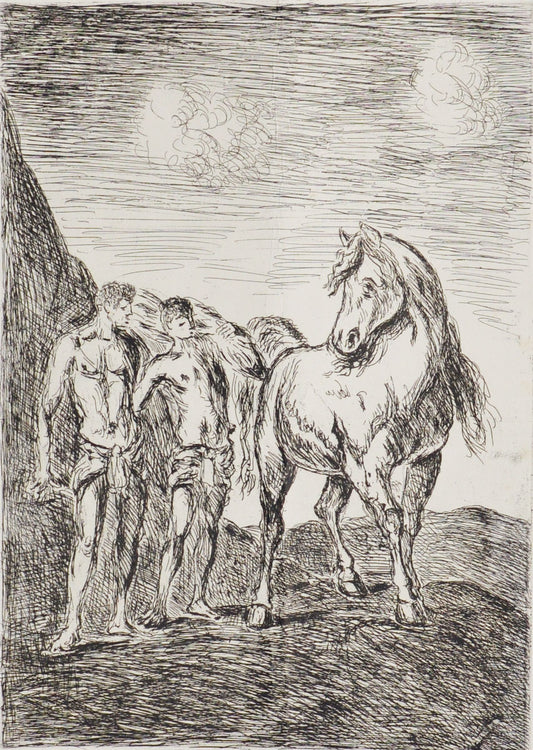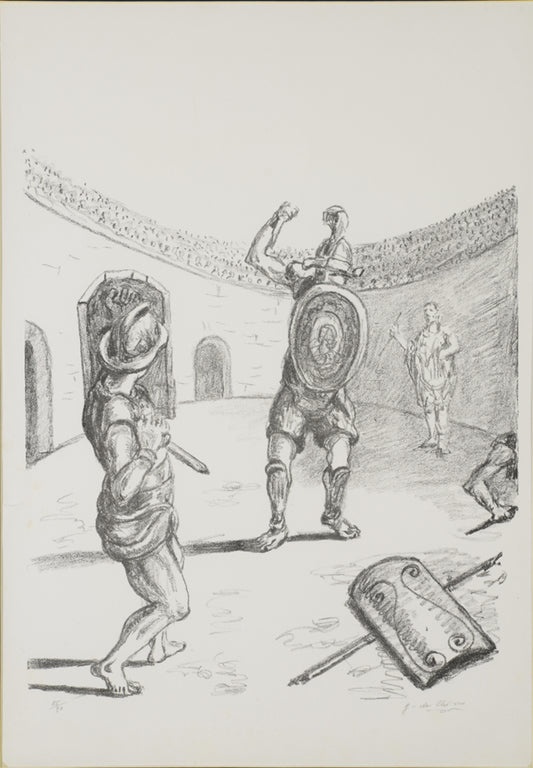Collection: Giorgio De Chirico
Giorgio de Chirico, an Italian artist and writer, was born on July 10, 1888 in Volos, Greece to Genoan mother and Sicilian father. In the years before World War I, he founded the scuola metafisica art movement, which profoundly influenced the surrealists. After 1919, he became interested in traditional painting techniques, and worked in a neoclassical or neo-Baroque style, while frequently revisiting the metaphysical themes of his earlier work.

-
I Diouscuri
Regular price $800.00 USDRegular priceUnit price / per -
Gladiators in the Arena (Colored)
Regular price $4,000.00 USDRegular priceUnit price / per -
Giorgio de Chirico, Gladiators in the Arena (Uncolored)
Regular price $3,000.00 USDRegular priceUnit price / per



